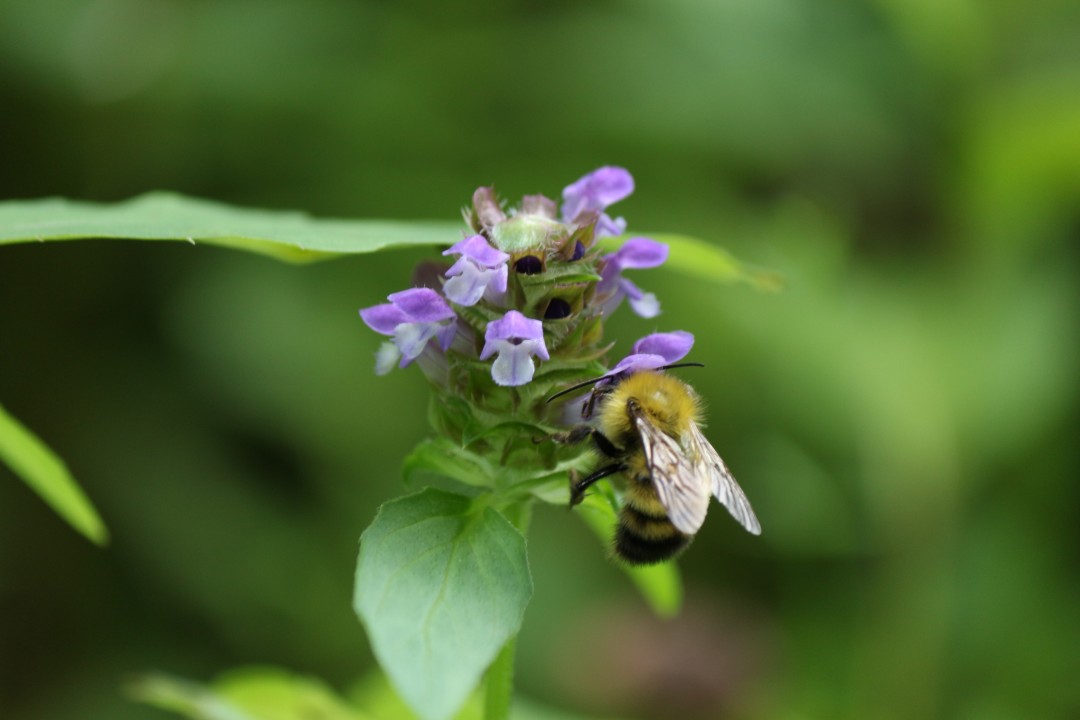Heal-all is a hardy, ubiquitous little wildflower–in fact, it’s found all over the world in temperate zones. On a mowed lawn it will flower at two inches high, though it can get knee-high in a meadow. The square stem and opposite leaves show that it’s in the mint family, though with no minty smell. A humble little plant, easy to overlook. But it’s often noticed by bumblebees–the short, strong stems and stubby flower heads are a handy perch for the portly insects, who need stalwart flowers to support their weight. Bumblebees are important plant pollinators whose numbers are declining, so making room on the lawn for some heal-all is a nice way to help them out.
Heal-all is also called Self-heal, and has been used medicinally for centuries. It’s like a little green first aid kit–it doesn’t cure major illness but it’s handy for the trivial ailments of life, which can seem so overwhelming when you’re the one afflicted with them–sore throat, diarrhea, mouth sores, infected cuts. An old remedy is to boil water and steep the leaves and flower heads to make a liquid that can be used as mouthwash, tea, gargle or wash for sores and wounds. It does have a mild antibiotic effect, and is especially good for “green wounds” as the old herbalists put it–infected areas. Another name for the plant is “carpenter’s-thumb”–an object that’s all too frequently cut with a saw blade or whacked with a hammer.
The really amazing thing about this plant, though is how flat-out gorgeous those little purple blossoms are when you take the time to look at them up close.
Thanks to Mike Lee for the beautiful photograph, taken at Pine Hollow Arboretum.






Recent Comments